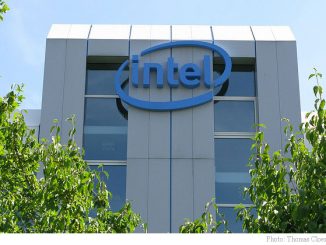Autonomous vehicles are on the rise. It’s not the first time we’ve heard this. What’s new, however, is the information that there’s a ‘new’ major player in this emerging industry that’s estimated to grow into a $70 billion market by 2030.
We all know Intel Corporation (NASDAQ:INTC) as the reigning computer chip giant because for the longest time computer makers have been using nothing but Intel chips and processors. Now that it’s facing a possible threat from competitors like Qualcomm, Inc. (NASDAQ:QCOM) and lately, ARM, the Santa Clara, Calif.-based company may be seeing this as the perfect time to focus (and maybe hope to dominate) in a different type of market — that of autonomous vehicles. Intel made this intention known by announcing its acquisition of Israel-based autonomous vehicle-software maker Mobileye NV (NYSE:MBLY) for a whopping $15.3 billion, or $63.54 per share.
To be clear, Intel didn’t rush blindly into this deal. In fact, Intel and Mobileye have previously worked together with BMW to test self-driving cars and are planning on introducing fully autonomous cars by 2021. Plus, there are several operational vehicle models, as well as autonomous vehicles undergoing testing, that are currently using Intel chips. The decision to acquire Mobileye is simply a continuation of a partnership that has been going on for a while, and is poised to culminate and usher in a new breed of self-driving vehicles — integrating Intel’s data technologies with Mobileye’s expertise in ‘automotive-grade computer vision’.
Mobileye was founded in 1999. It employs 660 personnel and presently accounts for about 70% of the world market for advanced driver-assistance and anti-collision systems such as automatic braking, lane centering and pedestrian detection.
Mobileye used to be one of Tesla’s vision systems suppliers, until that tragic accident last year which claimed the life of a Tesla Model S driver operating the vehicle under Tesla’s Autopilot feature. Since then, Tesla has been relying on its in-house developed integrated vision-based system that depends on radars instead of cameras.
Meanwhile, Mobileye continued with its efforts, retaining auto giants BMW, General Motors, Hyundai and Nissan as its biggest customers. Its portfolio has expanded from cameras and sensors, to more advanced technologies such as cloud software, data fusion, machine learning and road mapping.
Also, there’s no doubt that Mobileye has now accumulated an enormous amount of data from millions and millions of miles of driving experience. This is, of course, essential in making its deep learning vision system more efficient and most importantly, not easily replicable from the competition. The more images it captures, the better it becomes at identifying what it is seeing so that it can trigger the appropriate response, like stay on the same lane, or put on the brakes. As reported by MIT Technology Review, Mobileye has also started to use ‘reinforcement learning’, a technique that teaches computers how to drive safely in different kinds of situations.
By combining all these techniques with Intel’s hardware and software expertise, along with its expansive data center network, the goal of making autonomous driving comparable with normal driving should be easier to achieve.
As Intel CEO Brian Krzanich said in a press release the company issued, “Together, we can accelerate the future of autonomous driving with improved performance in a cloud-to-car solution at a lower cost for automakers.”
- Bulenox: Get 45% to 91% OFF ... Use Discount Code: UNO
- Risk Our Money Not Yours | Get 50% to 90% OFF ... Use Discount Code: MMBVBKSM
Disclaimer: This page contains affiliate links. If you choose to make a purchase after clicking a link, we may receive a commission at no additional cost to you. Thank you for your support!




Leave a Reply